- Clone
- P84 (See other available formats)
- Regulatory Status
- RUO
- Other Names
- SHPS-1, BIT, P84, PTPNS1, CD172 antigen-like family member A
- Isotype
- Rat IgG1, κ
| Cat # | Size | Price | Quantity | |||
|---|---|---|---|---|---|---|
| 285101 | 50 µg | $288.00 | ||||
CD172a, also known as SIRPα, is a type I transmembrane protein with one V-set Ig-like and two C-set Ig-like domains in the extracellular portion, and two ITIM motifs and a proline-rich region in the cytoplasmic tail. CD172a is expressed by monocytes, macrophages, myeloid cells, and neuronal tissue. The phosphorylation of SIRPα ITIMs induces the recruitment and activation of the tyrosine phosphatases PTPN6 and PTPN11, resulting in the negative regulation of several biological processes. The ligands of CD172a are CD47, SP-A, and SP-D.
Product Details
- Verified Reactivity
- Mouse
- Antibody Type
- Monoclonal
- Host Species
- Rat
- Immunogen
- Mouse brain membrane protein
- Formulation
- Phosphate-buffered solution, pH 7.2, containing 0.09% sodium azide
- Preparation
- The antibody was purified by affinity chromatography and conjugated with Spark Red™ 718 under optimal conditions.
- Concentration
- 0.2 mg/mL
- Storage & Handling
- The antibody solution should be stored undiluted between 2°C and 8°C, and protected from prolonged exposure to light. Do not freeze.
- Application
-
FC
- Recommended Usage
-
Flexi-Fluors™ are provided at a standard 0.2 mg/mL concentration. We recommend titrating this reagent to determine the optimal concentration for each application. For many flow cytometry applications, conjugated antibodies perform well at concentrations ranging from 0.03 to 1.0 µg per million cells in 100 µL. We recommend testing a range of concentrations starting from 10 µg/mL.
For example, make five 1:1 serial dilutions of the 0.2 mg/mL antibody. Add 5 µL of each dilution (including the undiluted antibody) to 100 µL of cells (at 107 cells/mL) to test six concentrations -- 1.0, 0.5, 0.25, 0.125, 0.06, and 0.03 µg per million cells in 100 µL volume. Compare staining patterns or create a titration curve using the MFI or staining index to determine the optimal concentration. - Excitation Laser
-
Red Laser (633 nm)
- Application Notes
-
Additional reported applications (for the relevant formats) include: blocking SIRPa interaction with CD474, in vivo blocking of dendritic cell migration3, enhancing of macrophage phagocytosis2,4, immunohistochemical staining of cerebellum frozen sections1, immunoprecipitation2,4, and spatial biology (IBEX)5,6.
- Additional Product Notes
-
For more information about Flexi-Fluors™, visit our Flexi-Fluor™ page and review FAQs associated with this product line.
-
Application References
(PubMed link indicates BioLegend citation) -
- Comu S, et al. 1997. J. Neurosci. 17:8702. (IHC)
- Gresham HD, et al. 2000. J. Exp. Med. 191:515. (IP)
- Fukunaga A, et al. 2004. J. Immunol. 172:4091. (Block)
- Oldenborg PA, et al. 2000. Science 288:2051. (Block, IP)
- Radtke AJ, et al. 2020. Proc Natl Acad Sci U S A. 117:33455-65. (SB) PubMed
- Radtke AJ, et al. 2022. Nat Protoc. 17:378-401. (SB) PubMed
- RRID
-
AB_3106355 (BioLegend Cat. No. 285101)
Antigen Details
- Structure
- Type I transmembrane protein
- Distribution
-
Monocytes, macrophages, myeloid cells, neuronal tissue
- Function
- Negative regulation of several biological processes
- Interaction
- PTPN6, PTPN11
- Ligand/Receptor
- CD47, SP-A, SP-D
- Cell Type
- Dendritic cells, Macrophages, Monocytes, Neutrophils
- Biology Area
- Cell Adhesion, Cell Biology, Immunology, Signal Transduction
- Molecular Family
- Adhesion Molecules, CD Molecules, Protein Kinases/Phosphatase
- Antigen References
-
1. Zhao XW, et al. 2011. P. Natl. Acad. Sci. USA 108:18342.
2. Verjan-Garcia N, et al. 2011. J. Immunol. 187:2268.
3. Sato-Hashimoto M, et al. 2011. J. Immunol. 187:291.
4. Raymond M, et al. 2010. Eur. J. Immunol. 40:3510. - Gene ID
- 19261 View all products for this Gene ID
- UniProt
- View information about CD172alpha on UniProt.org
Other Formats
View All CD172a (SIRPα) Reagents Request Custom ConjugationCompare Data Across All Formats
This data display is provided for general comparisons between formats.
Your actual data may vary due to variations in samples, target cells, instruments and their settings, staining conditions, and other factors.
If you need assistance with selecting the best format contact our expert technical support team.
-
Purified anti-mouse CD172a (SIRPα)
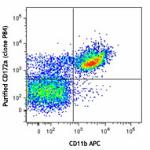
C57BL/6 mouse bone marrow cells were stained with CD11b APC ... 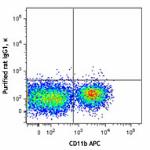
-
FITC anti-mouse CD172a (SIRPα)
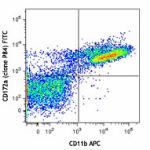
C57BL/6 mouse bone marrow cells were stained with CD11b APC ... 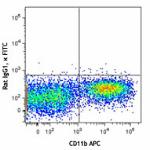
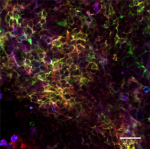
Fixed whole mount mouse spleen was stained with FITC CD172a ... -
PE/Cyanine7 anti-mouse CD172a (SIRPα)

C57BL/6 mouse bone marrow cells were stained with CD11b FITC... -
PerCP/Cyanine5.5 anti-mouse CD172a (SIRPα)

C57BL/6 mouse bone marrow cells were stained with CD11b APC ... -
PE anti-mouse CD172a (SIRPα)
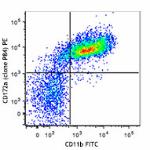
C57BL/6 mouse bone marrow cells were stained with CD11b FITC... 
-
APC anti-mouse CD172a (SIRPα)
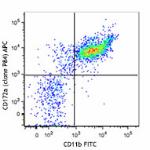
C57BL/6 mouse bone marrow cells were stained with CD11b FITC... 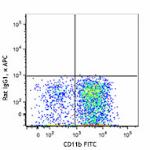
-
PE/Dazzle™ 594 anti-mouse CD172a (SIRPα)
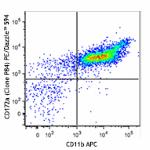
C57BL/6 mouse bone marrow cells were stained with CD11b APC ... 
-
Alexa Fluor® 594 anti-mouse CD172a (SIRPα)

C57BL/6 mouse frozen spleen section was fixed with 4% parafo... 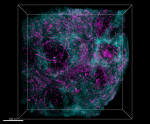
Paraformaldehyde-fixed (4%), 500 μm-thick mouse spleen secti... -
APC/Cyanine7 anti-mouse CD172a (SIRPα)

C57BL/6 mouse bone marrow cells were stained with CD11b FITC... -
Alexa Fluor® 488 anti-mouse CD172a (SIRPα)
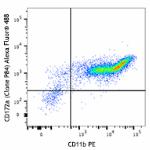
C57BL/6 mouse bone marrow cells were stained with CD11b PE a... 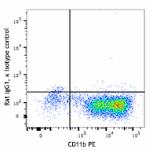
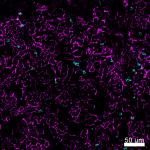
Confocal image of C57BL/6 mouse thymus sample acquired using... 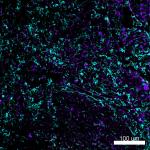
Mice were injected subcutaneously with sheep red blood cells... -
Alexa Fluor® 700 anti-mouse CD172a (SIRPα)

C57BL/6 mouse bone marrow cells were stained with CD11b FITC... -
Biotin anti-mouse CD172a (SIRPα)
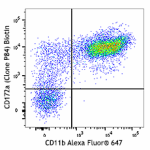
C57BL/6 mouse bone marrow cells were stained with CD11b PE a... 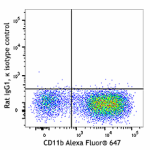
-
Alexa Fluor® 647 anti-mouse CD172a (SIRPα)
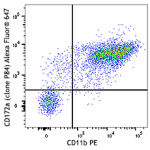
C57BL/6 mouse bone marrow cells were stained with CD11b PE a... 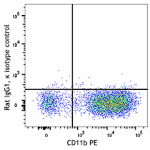
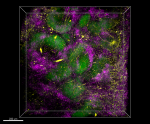
Paraformaldehyde-fixed (4%), 500 μm-thick mouse spleen secti... -
APC/Fire™ 750 anti-mouse CD172a (SIRPα)

C57BL/6 mouse bone marrow cells were stained with CD11b PE a... 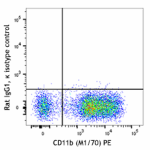
-
TotalSeq™-A0422 anti-mouse CD172a (SIRPα)
-
Brilliant Violet 510™ anti-mouse CD172a (SIRPα)

C57BL/6 mouse bone marrow cells were stained with CD11b APC ... -
TotalSeq™-C0422 anti-mouse CD172a (SIRPα)
-
Ultra-LEAF™ Purified anti-mouse CD172a (SIRPα)

C57BL/6 mouse bone marrow cells were stained with CD11b APC ... 
-
TotalSeq™-B0422 anti-mouse CD172a (SIRPα)
-
PerCP/Fire™ 780 anti-mouse CD172a (SIRPα)

C57BL/6 mouse bone marrow cells were stained with anti-mouse... -
Spark Red™ 718 anti-mouse CD172a (SIRPα) (Flexi-Fluor™)
